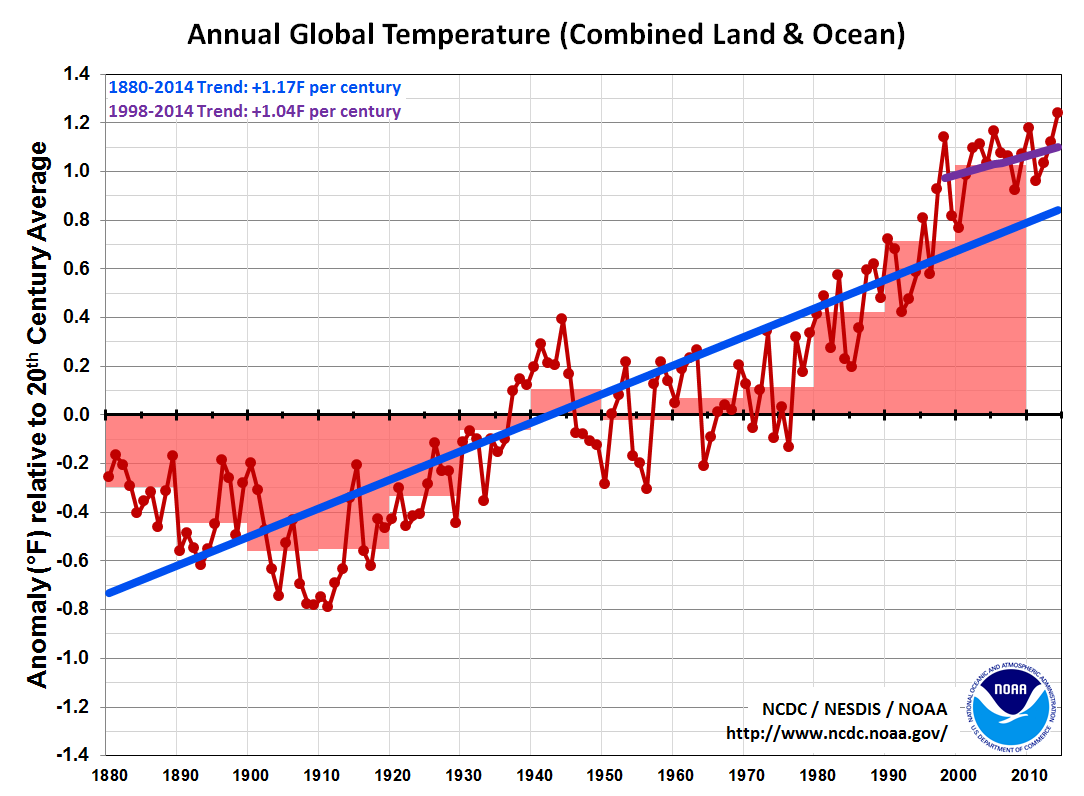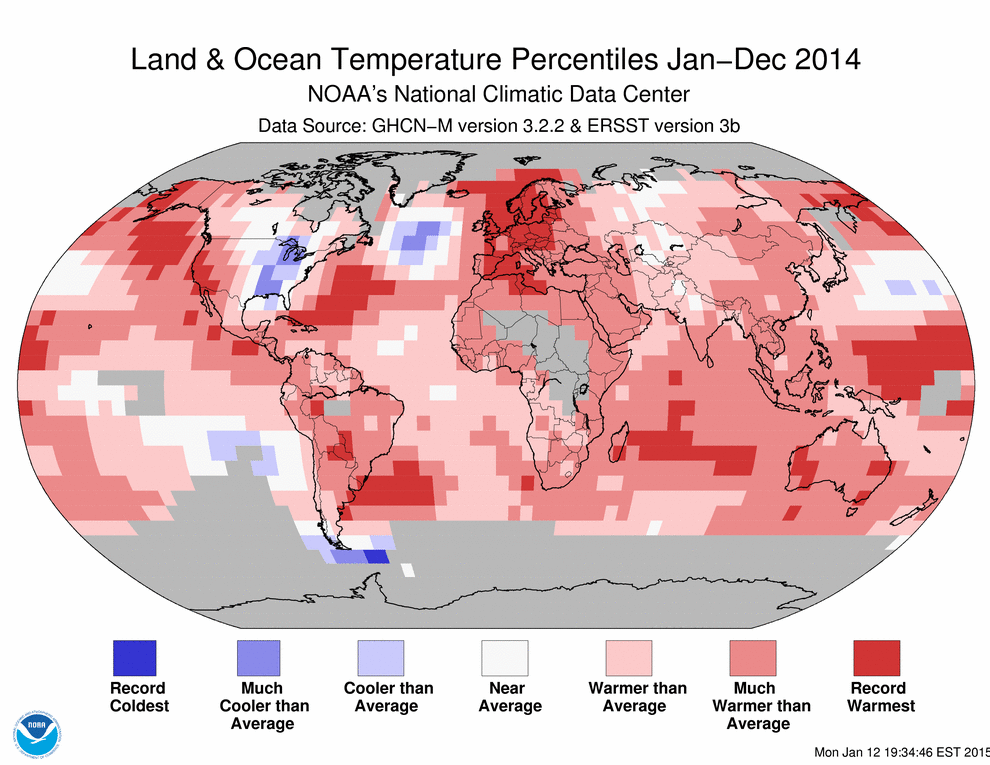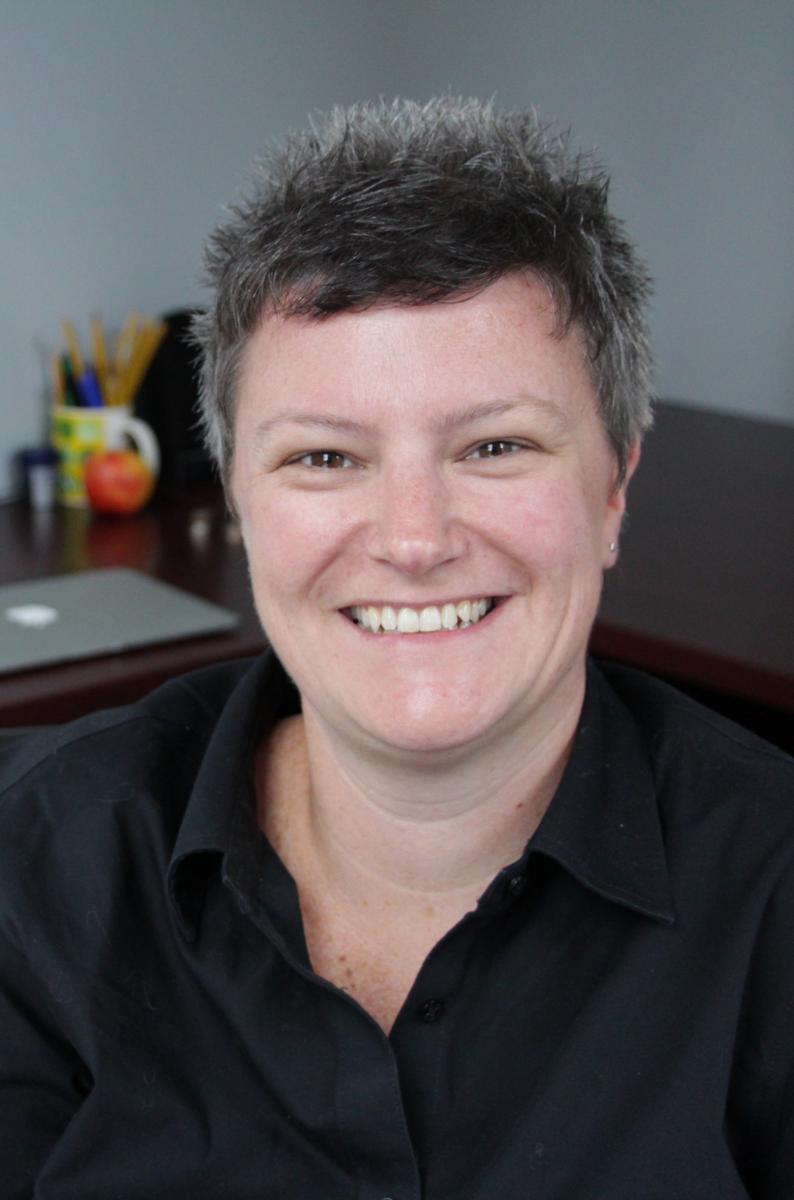by Dr. Anne Waple, Vice President, Second Nature
Normally, being at the top of the list is a good thing, but when it comes to ranking the Earth's annual temperature, we'd prefer to see ourselves somewhere lower on that particular chart. NOAA and NASA scientists announced on January 16th 2015, that 2014 was the warmest year on record for the globe since records began in 1880.
Of course, this is notable for many reasons:
Firstly this demonstrates the continuation of a trend - all of the top ten warm years have occurred since 1998, and nine of the top ten have happened since 2002.
The most recent decade is the also the warmest decade on average.
Every year since 1997 has been above the 20th Century average. And globally, there has been no month that has been below the long-term average in twenty-nine years. Yep, twenty-nine years. That means almost half of the global population has never experienced a month where the global temperatures were below average.
However, perhaps the most notable point about this year's record is that in no month during 2014 were there El Nino Conditions. This is the first time since 1990 that we have had a record warm year without El Nino conditions occuring for at least part of the year. Typically El Nino conditions will elevate global termperature, but this year, the Earth's warmth had no such push. So 2014 clearly demonstrates the influence of the ongoing and underlying trend towards globally warmer temperatures as a result of increasing greenhouse gases.
So what does this mean really? It certainly didn't feel all that toasty on the U.S. East Coast this year. In fact, you can see in the global map of temperatures below that this region is one of the only regions in 2014 that had below average temperatures. Lucky us in Second Nature's headquarters in Boston! What is important to note about the global temperatures though is that they are mix of land and ocean temperatures, and if you separate them out, what you see in 2014 is that the surface temperatures of the ocean were also record warm. Since oceans absorb heat more slowly and hang onto heat longer than land, this has particularly important implications for future conditions as well.
 So what it means in the near term is that year-to-year, there will be variation in who gets the bulk of the warmth and who gets a reprieve, but overall more of us will experience conditions that are well outside of the range of what our systems (social, economic, and environmental) are designed to handle.
So what it means in the near term is that year-to-year, there will be variation in who gets the bulk of the warmth and who gets a reprieve, but overall more of us will experience conditions that are well outside of the range of what our systems (social, economic, and environmental) are designed to handle.
In 2014, this trend, it's consequences, and response options were also comprehensively outlined and assessed in several key reports. The U.S. National Climate Assessment was released in May 2014 and not only assessed the national climate, but also looked at the impact and options across the regions of the U.S. and across our major sectoral interests - energy, water, agriculture, transportation and many others. This landmark report represents the most comprehensive assessment of its kind and allows us to more robustly evaluate our decisions in the context of a changing climate. There are summaries as well as the main report and it's well worth checking into. There were also global reports - the Intergovernmental Panel on Climate Change released reports in 2014 on the state of climate change, mitigation and adaptation. Rigorous and comprehensive analysis now abound regarding our current and likely future climate circumstances and what we can do about it. One of the critical tasks of course, is to reduce the cause of climate change.
So about those greenhouse gases:
What we have been doing at Second Nature since the inception of the American College & University Presidents' Climate Commitment (ACUPCC) in 2006, is clearly illustrating that the problem is one we can change. Over 680 colleges and university presidents have committed their institutions to become carbon neutral, among many other sustainabilty goals, and emissions have been drastically reduced for hundreds of colleges as a result, cutting over 3.5 million metric tonnes of CO2 equivalent for several hundred schools. This is staggering success by any measure, and demonstrates the power of leadership and of higher education. And....we have much more to do of course.
Our recent Climate Leadership Summit occurred in October 2014, (when it was already clear that 2014 would be close to a record-breaking hot year globally), and showcased impressive and far-reaching actions. It also brought together teams of people from many signatory institutions to explore even greater action and opportunities. The ACUPCC presidents and chancellors, and their amazing sustainability staff, are committed more than ever to rapid and innovative progress towards carbon neutrality and influencing change broadly, and we will be sharing much more of their success throughout 2015.
Resilience:
In addition, at Second Nature, we have begun to explore how to support our higher education leadership in making similarly bold commitments to campus and community resilience. As we see our human and natural systems tested, and sometimes overwhelmed, by the current and future climate changes, we must be increasingly prepared not only to limit the negative consequences but to design for better outcomes. And this goes for our energy systems too. Mitigation (limiting climate change) and adaptation (moderating the consequences of climate change) go hand in hand as we move towards a resilient and sustainable society. You will be hearing much more about this in 2015 and we look forward to working with you!
Meanwhile, on a personal note, I used to work at NOAA, and part of my job was to calculate and map these climate numbers each month, season, and year. I want to share that the scientists at NOAA and NASA today who dedicate themselves to monitoring and evaluating the World's climate not only work extremely hard on our behalf, but are also some of the smartest and nicest people I have ever met, and have absolute scientific integrity. They deal with angry phone calls and distrust from many and are always professional and, above all, dedicated to their work. I also know from experience that this time of year is very busy and so I want say a big thank you for your service!


Add new comment